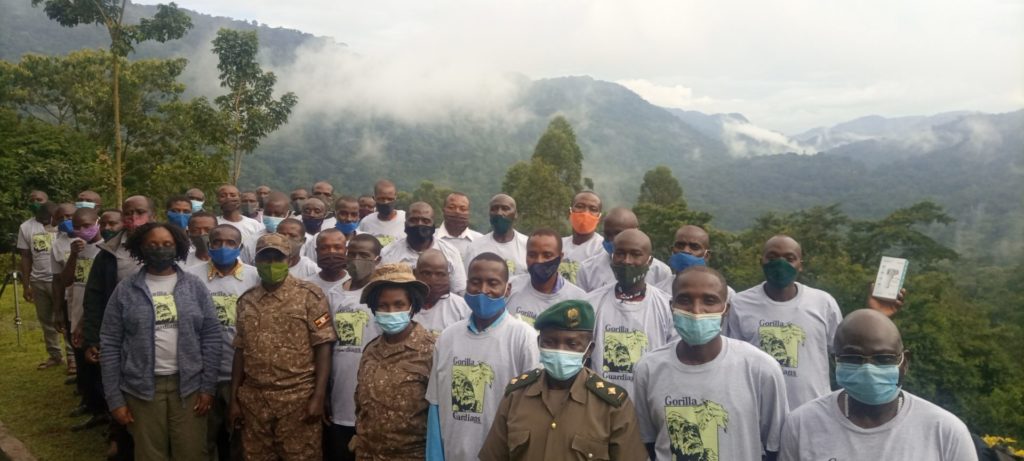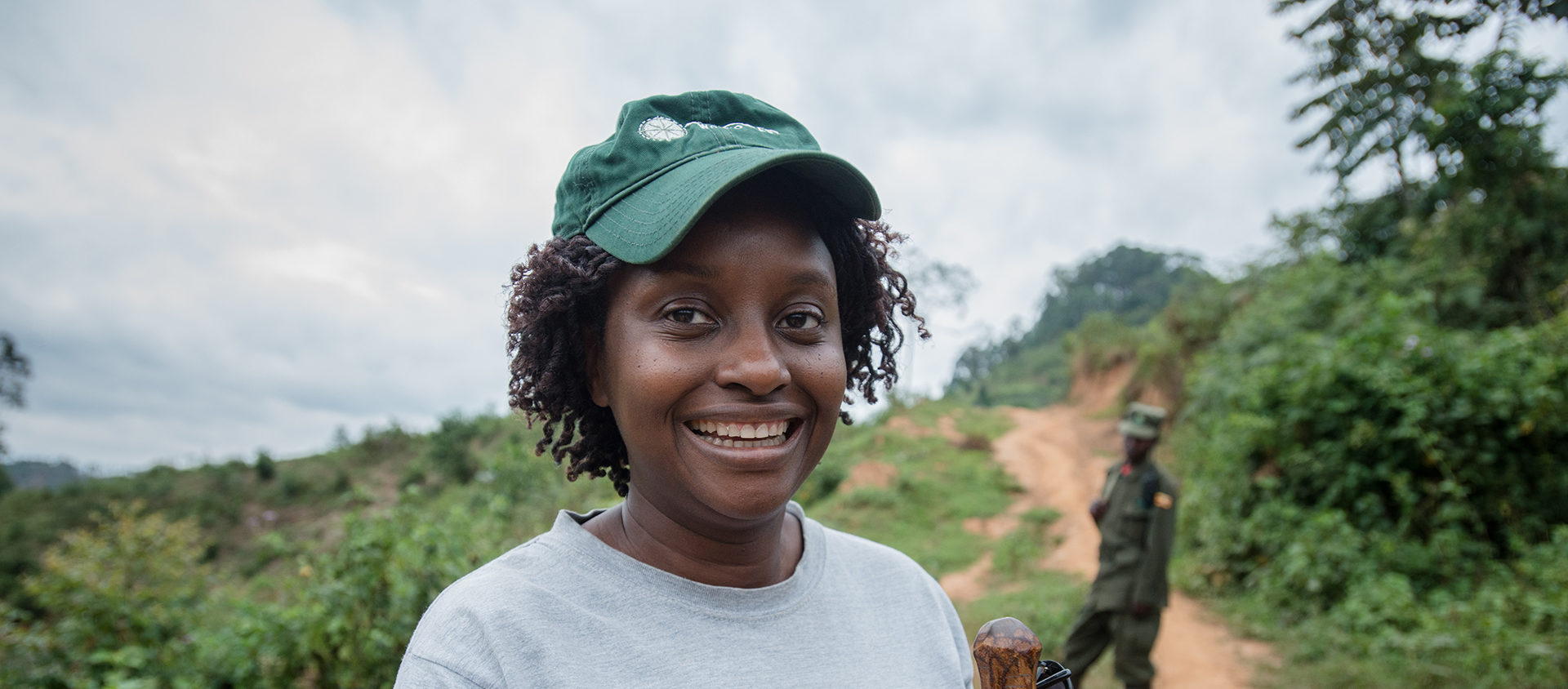Excerpt: Walking With Gorillas: The Journey of an African Wildlife Vet
Written by Dr. Gladys Kalema-Zikusoka | Published: March 13, 2023
“Embracing Family Planning” chapter reprinted with permission from the author and Skyhorse Publishing Inc.
So much work had been done to establish Conservation Through Public Health, but I knew it was only just the beginning of the journey to build a model that could change the world.
On a flight, I met a woman who told me about an organization called Ashoka, which focuses on supporting individuals and not organizations, and nurtures leading social entrepreneurs with systems-changing ideas. To become an Ashoka fellow you must show creativity and an entrepreneurial spirit, and your new idea should have potential for great social impact. Another important criterion is having a strong ethical fiber. The woman, Irene Mutumba, had become an Ashoka fellow for her idea called the Private Education Development Network, which was transforming the Ugandan education system by teaching kids entrepreneurial skills at an early stage of their lives. Irene nominated me to become an Ashoka fellow for our One Health approach that she felt was transforming conservation practice in Uganda. Up to this point, I had not considered myself an entrepreneur.
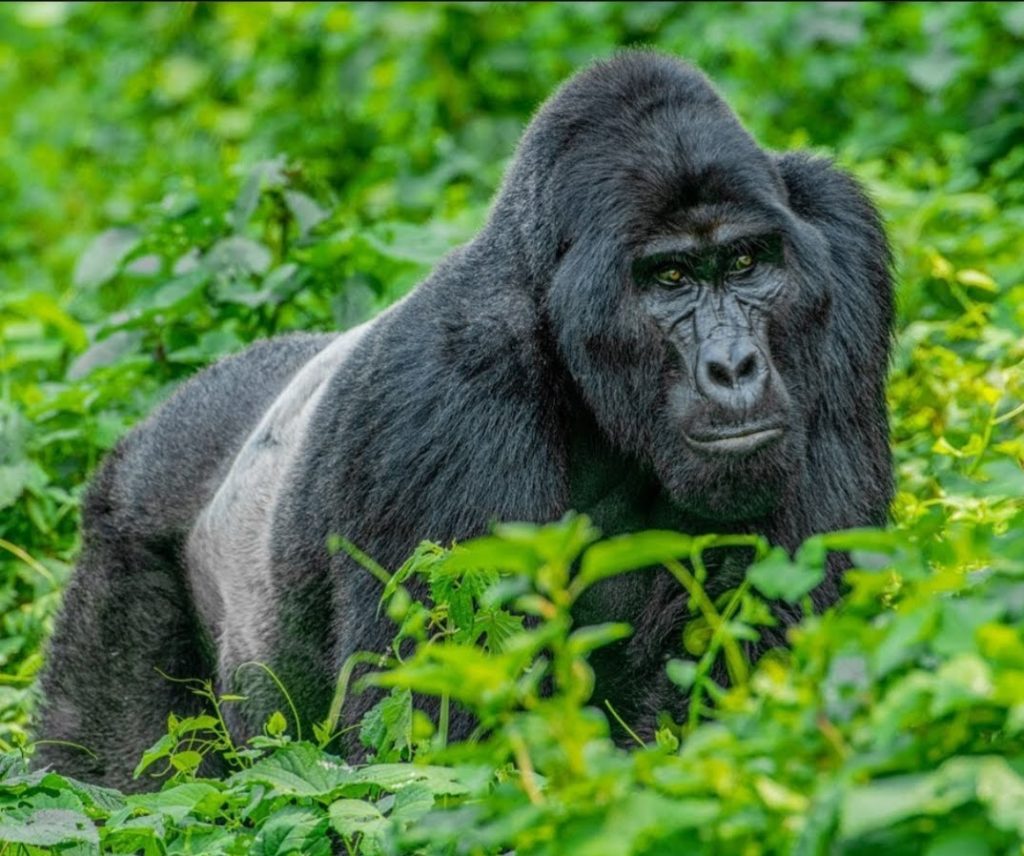
Though we were benefiting public health by bringing health services to the last mile users around protected areas, the really big idea was a new approach to conservation by improving the health of people, animals, and the environment together. Several months after the Ashoka country director, Debbie Serwadda, and her program manager, Abu Musuuza, visited Bwindi to see for themselves, I became a fellow for merging Uganda’s wildlife management and rural public health programs to create common resources for both people and animals. The fellowship came with a three-year stipend for me to focus on developing this new idea and connections to additional funding and recognition. One such connection was with the PBS show Frontline World, where Singeli Agnew filmed our One Health work to prevent and control tuberculosis.
I was pleased with how the CBDOTS1 program was going. Not only were we achieving recognition, but the number of people being referred and treated for tuberculosis was increasing every day, and the community was embracing our new approach to conservation. Having seen the success of this project, in 2006, the new USAID Population Officer, Heather D’Agnes, asked us to add family planning to the CBDOTS model and perhaps get the same volunteers who were watching people take tuberculosis medication to be the ones who we trained to encourage their community to adopt family planning as well as distribute contraceptives to those who wanted them.
To incorporate family planning into the CBDOTS model, Heather asked us to focus on one target group—either women, men, teenagers, or couples. I looked around me and, with Vaster2 as my main frame of reference, saw that most teenage girls were unfortunately married off by the age of 15 after getting pregnant. I also soon realized that men and women were not openly talking to each other about family planning and the use of contraceptives. My gut feeling was to focus on couples.
USAID could not directly give CTPH funding because the administrative requirements were too arduous for a small start-up nonprofit. So, they provided funding to us through an organization based in Washington, DC: Camp Dresser and McKee International Inc. This organization also provided valuable advice on managing the project and, more importantly, allowed us to be creative and develop an impactful program to improve access to family planning and health care.
I did not have much information about how the community felt about family planning and requested Mbarara University to send us some students to conduct a needs assessment for family planning around Bwindi. They camped at the Kayonza government health center for two weeks and had separate focus group discussions with men and women, and also went to churches to talk about family planning. Though we wanted an independent assessment, I had the privilege to attend one of the sessions and was extremely impressed with how these young medical and nursing students were engaging the local communities and getting them to express their feelings about what turned out to be a highly controversial subject not only in Uganda but also in the United States, where the funding had come from.
The lack of family planning meant that women did not have control over their bodies. Many of them did not want to have a baby every year but were resigned to their fate. The majority of the women did not have the support from their husbands, and when it was time to get a new supply of contraceptives, they would lie to their husbands that they were going to the market and then would secretly go to the health center to either get an injection or pills. Whenever their husbands found out that they were taking the pill, they would throw the pills in the pit latrines. Worse still, if they managed to successfully hide the fact that they were taking birth control, their husbands would beat them up for not getting pregnant.
To avoid this cycle of domestic violence, we decided that it was best to engage couples through peer education and get both husband and wife to see the benefits of jointly planning for the number of children that they were able to manage. What resonated most with the men was being able to reduce poverty in their homes through balancing the family budget. Women embraced birth control because it gave them more control over their bodies, freeing them up to do something else with their lives in between having babies, such as starting a business.
Some churches still preached the message in the Bible that God said go forth and multiply. However, I strongly believed that the earth’s resources could not sustain this type of population growth. There was simply not enough to meet the needs of all the children whom women did not plan to have, and God did not intend for people to suffer and starve. This is how we got the religious leaders to modify the message to their congregation, over whom they exerted great influence.
The students discovered that the Bwindi community had many myths and misconceptions about birth control. Some of them thought that if you took it, you would never have a baby again, while others firmly believed that your womb would rot.
We called for meetings with the local community leaders to introduce this new program. Just like the CBDOTS program, we talked about what we would like to do and asked them what they thought about the volunteers looking after TB patients being the same ones who distribute contraceptives. They were excited about this new program but preferred that the volunteer work be spread more evenly by selecting a new person from each village to reach everyone with family planning. I was once again humbled by their wisdom to identify what worked best for their community. We asked them to select that person from each village, who should be trustworthy and could read and write because they needed to be able to collect data to determine if the program was making a difference. At that meeting, they jointly selected the volunteers, enabling us to begin with 22 community conservation health workers from 22 villages in two parishes with intense conflict between people and gorillas. We selected two more people from each parish to supervise them, making a total of 26. I did not think much about it at the time, but having women as half of our volunteers was enabling us to achieve something bigger: reducing gender disparities. Over time, an unintended benefit of this PHE [population, health, and environment] program was that among our volunteers, men became more engaged in health care and family planning, and women became leaders in their community promoting conservation and better management of natural resources, breaking societal norms, and having a longer-lasting impact.
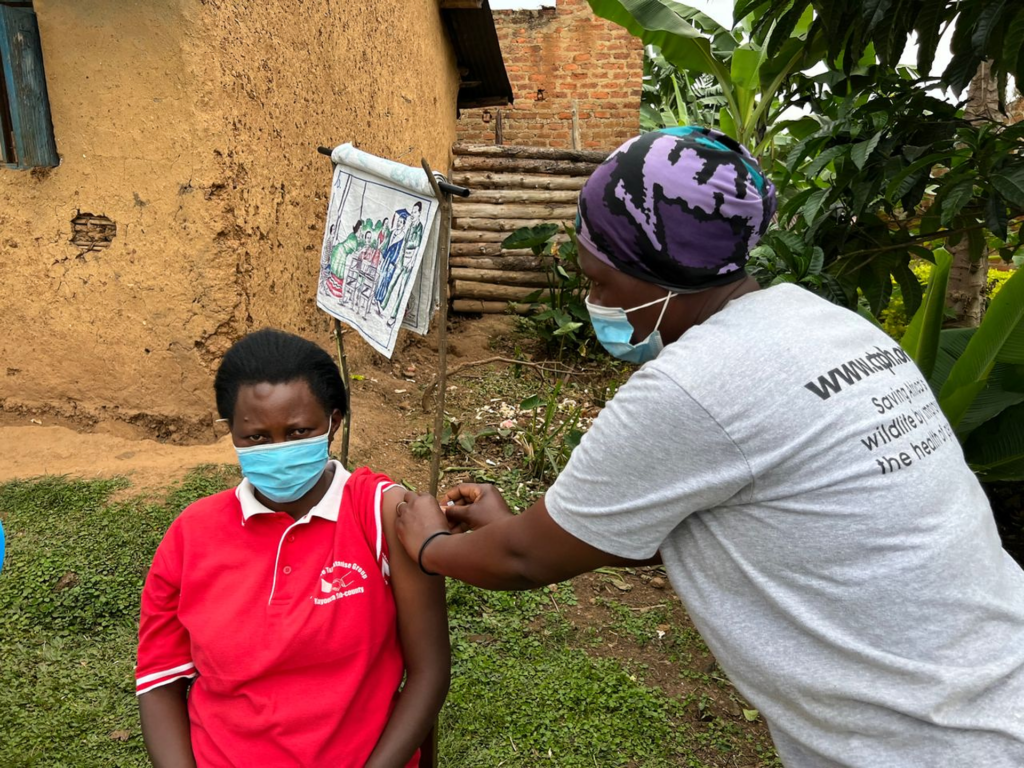
We hired an experienced nurse and midwife, Sylvia Nandago, to head the program. We designed forms for community conservation health workers to record the number of homes they visited and women and men they referred to local health centers to obtain a method of family planning, as well as what contraceptive method they took up. In the first year, the number of new users of contraceptives increased from 35 to 145, and in the second year, another 147 new users signed on. However, we found out that though women preferred the injection because they only needed to excuse themselves from home once every three months to sneak to the local health centers to receive it on market day, they would find overworked nurses and midwives dealing with very sick children and would often go home without getting the contraceptive and then conceive. This prompted us to approach Family Health International (FHI 360), an organization piloting a program where voluntary health workers delivered the injections every three months. CTPH became their fifth partner, to train the community conservation health volunteers to give community-based Depo-Provera injections in the comfort of the volunteer’s home. This led to the number of family planning users doubling to 350 in the third year. It was a major breakthrough.
One of my most heartwarming testimonies was about a woman who owned a shop and had three girls. Once our program was introduced to her, she decided to stop trying for a boy to be an heir and concentrate on educating the girls instead. This was helping to ensure a bright future for her children, and she went on to teach others in her community about family planning as a means of breaking the cycle of poverty.
Convincing communities to change their behavior around the sensitive issue of family planning and conservation wasn’t easy, but by developing innovative approaches, we were able to get the message through. One approach we took was by working with Ashoka Fellow Craig Esbeck, Founder of Mango Tree Enterprise, who developed affordable and easily obtainable teaching aids—flip charts made out of sisal, a local material. We collaborated on creating a set of visual aids to educate communities with an integrated health and conservation message that started off with two families—one with positive impacts on the gorillas and their habitat and one with negative impacts—based on the number of children they had, which also had an impact on the health of their families. This type of communication tool has proved really effective in changing behavior not only in Uganda but also in other developing countries. What became clear in all of this is that through our knowledge of the culture and the help of the local community, we were able to develop an effective tool that worked. So often, conservation planning does not involve local community members who are aware of what will work and what will not.
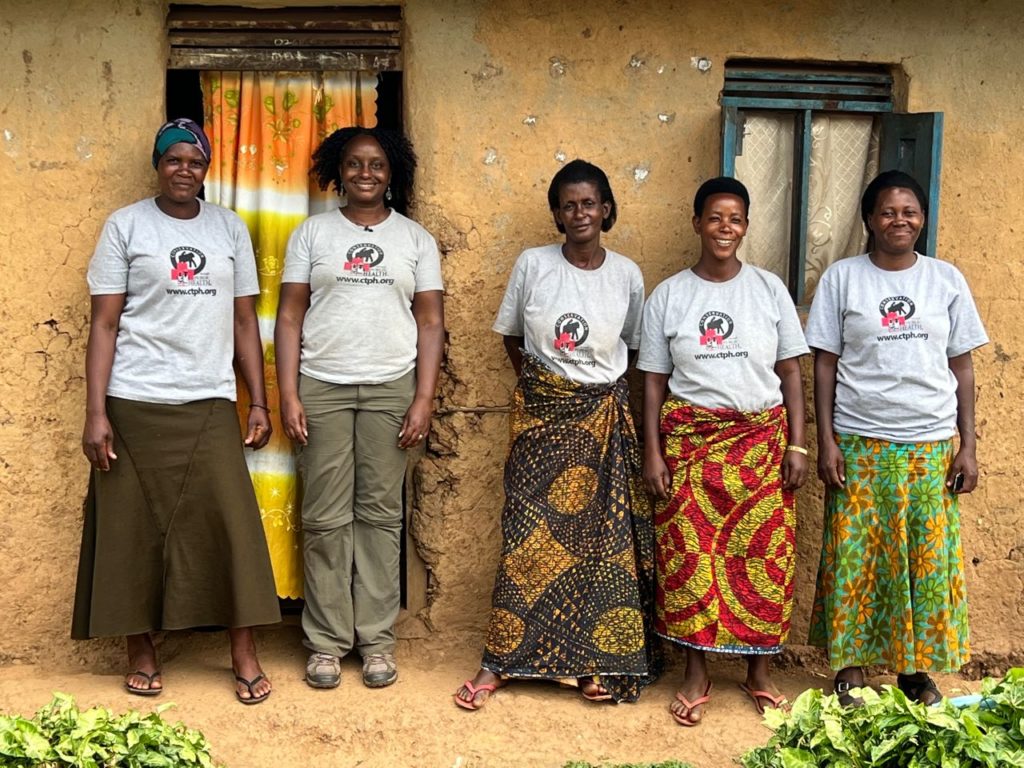
We collected data measuring how many people were changing behaviors and attitudes as a result of the flip chart. We also measured the number of people identified and referred for scabies, which had affected the gorillas, as well as other common and potentially zoonotic health conditions including tuberculosis and HIV/AIDS.
One day at a meeting in the Kanungu district health office, we told them how impressed we were that the volunteers were visiting homes including those that were hard to reach at the edge of the park boundary. Dr. Ssebudde and the senior public health nurse, Florence Rwabihunga, asked us if the communities’ homes were becoming more hygienic as a result of these visits, and I didn’t know the answer. I realized we needed to find a way to measure those changes as well. With a grant from the Whitley Fund for Nature (WFN), we designed and implemented a plan to improve community hygiene and raise awareness of contamination by educating people about building latrines at their homes and keeping them clean with installed hand washing stations. When my WFN grant application was in its finalist stage, I was invited to London with my family to meet the jury. I could not believe it when I won the Whitley Gold Award, the green Oscars for outstanding leadership in nature conservation, which was given to me by Her Royal Highness Princess Anne, in the presence of over 300 conservationists and my family. Sir Edward Whitley mentioned that I had brought the oldest and youngest people to the ceremony including my mother of 80 years old, and my second son, Tendo, who was just two months old, along with his playful four-year-old brother, Ndhego. Winning the Whitley Gold Award for our new approach to conservation, keeping gorillas healthy by improving the health of people, was a huge validation for CTPH. Healthy gorillas enabled tourism to thrive, and the benefits were shared with the local communities, giving them an economic incentive to protect the gorillas. We received a lot of media attention, including from the BBC and The Guardian in the UK and New Vision in Uganda, as well as endorsements back home, where I received a congratulations letter from the Minister of Foreign Affairs, Hon. Tugume, and a congratulations message from the Uganda Wildlife Authority (UWA) Executive Director, Moses Mapesa.
The Whitley Gold Award provided two years’ funding of £60,000 to improve the health of the people, gorillas, and their environment so that when gorillas foraged in people’s gardens, they found cleaner homes with no dirty clothing on scarecrows, no open defecation, and no uncovered rubbish heaps.
Within one year, the proportion of pit latrines with hand-washing facilities had tripled from 10 percent to 30 percent. I was also excited that the number of people referred for tuberculosis testing had increased 11-fold. The same program was initiated in the second year of funding from the Whitley Gold Award to neighboring DRC to improve homes around Virunga National Park, where mountain gorillas are found in the Mikeno sector and eastern lowland gorillas are found in the Mount Tshiabirimu sector.
When we introduced the village health and conservation volunteer model to the minority Batwa hunter-gatherers, they also embraced the family planning program. We called them VHCTs (Village Health and Conservation Teams). When the Bwindi chief warden, Pontious Ezuma, expressed his doubts as to whether the Batwa also needed to adopt family planning because their ethnic group is so few in number, Flora Kyomukama, the first Batwa VHCT, said, “Family planning is important to me because I only want to have the number of children that I can manage to provide for.” Flora continued to be a role model in her community when she successfully encouraged them to acquire hand-washing stations, particularly important because the Batwa had the poorest hygiene, leading to a higher rate of infectious diseases. When CTPH Community Health and Conservation Field Officer Alex Ngabirano conducted a survey in 100 homes of the Batwa, he found a hand-washing station at only one of them. In one of the Batwa settlements, Alex was shocked to find children who had been sent home from school because they had scabies. This settlement was bordering the park and sometimes visited by the mountain gorillas. We recruited 14 Batwa VHCTs to improve the hygiene, health, and well-being of people in their settlements.
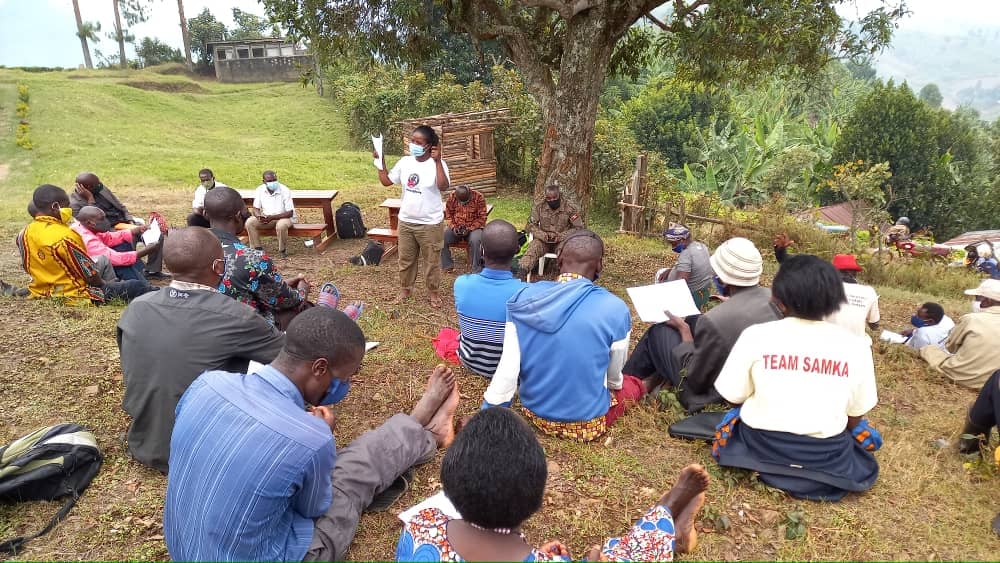
Within the first year, the newly recruited community conservation health volunteers requested livestock so that they could earn an income to sustain their volunteer efforts. Camp Dresser and McKee International Inc. agreed for us to reallocate some of the funding for workshops into buying livestock for sustainability. [Stephen Rubanga, Cofounder and Chief Veterinary Technician at CTPH], having worked for the Ministry of Agriculture, Animal Industry, and Fisheries (MAAIF) for over 20 years before joining CTPH, had experience in distributing livestock to rural populations and strongly advised against giving individual animals to each person because, depending on how good they were at rearing animals, the benefits would not last long. It was better to give them to the communities as a group activity that brought them all together. Mukono parish volunteers requested goats, and Bujengwe parish volunteers requested cows. Among them, two people in each parish volunteered to keep animals in their land, and then when they gave birth, they would give the offspring to another volunteer, until they all received an animal. Running alongside our program were also Village Saving and Loan Associations (VSLAs), introduced by CARE International through the Bwindi Mgahinga Conservation Trust. The initiative encouraged villages to save money, and, as a result of the livestock program CTPH had introduced, the volunteers found that they were now in a position to put money aside. We were very excited that the community volunteers had built upon what we had started with them. This has been such a huge success, and for the next decade, no volunteers dropped out because the money they earned from the livestock supported them when our funding ran out.
The finance system devised to keep records and share funds propelled us to receive more awards and funding. When invited to show a potential donor the system, Sam Rugaba, a VHCT leader, proudly pointed to a small black metal box with three locks that had the money. It was designed so that three people had to be present to access the funds and records. When the two other VSLA members came with their keys, they opened the box and explained how it all worked, while Sam showed us the records. This really warmed my heart.
This innovation led CTPH to win the Global Development Network’s 2012 Japanese Award for Most Innovative Development Project. It was the first time a Ugandan organization had ever won this award. The award came with funding of $30,000, which enabled us to expand the VHCT and VSLA model to other parishes around Bwindi—Nteko and Rubuguri—with high human and gorilla conflict, where we worked with their most active village health teams volunteer from each village. Winning the award also meant that we could apply for additional funding of $200,000 from the Japanese Social Development Fund to expand our model.
While attending a 30-year celebration for Ashoka in France, I received the tragic news that Mizano, a playful blackback in the Habinyanja gorilla group, was missing and suspected to be dead. I called Stephen to go and investigate, and, together with a CTPH veterinarian, Dr. Hameed Katerega, they walked 17 kilometers inside the forest and found the lifeless body of the 10-year-old adult male gorilla. They conducted a postmortem that revealed that a spear went through the right side of his shoulder and punctured his lungs, leading to hemorrhage and a painful death. It was shocking news and a sad day for conservation because I had assumed that all the communities around Bwindi had received so many benefits from conservation that they would not think of harming the gorillas, but I was wrong. A poacher had entered the park to hunt duikers, and Mizano got into a fight with the man’s hunting dog, which led him to spear the gorilla several times until he died. The Bwindi park management worked with the police, whose dogs traced the blood of the bleeding dog from the scene of the crime to the home of the poacher. He was arrested and put into a local jail and released after two weeks with a fine of just $20. This outraged everyone, including our VHCTs who first told me about the verdict, questioning why he was given such a small sentence after committing such a severe crime. I was so upset, I found myself writing to the UWA Executive Director, Dr. Andrew Seguya, complaining about this outcome.
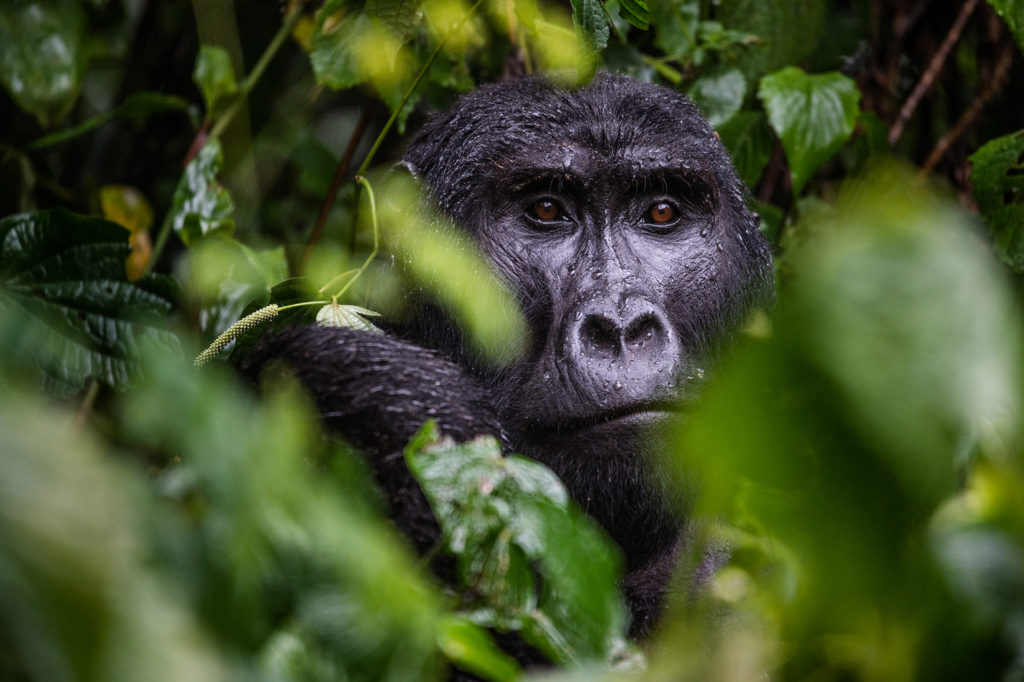
What stunned me was that this poacher had received a goat from UWA a few years ago, but when the gorilla got into a fight with his hunting dog, his gratitude for the goat didn’t stop him from killing Mizano. This took me back to Stephen’s valuable advice not to give individual livestock to community members, but to instead develop a project so that people had a viable livestock enterprise that brought them together with others and reminded them why they had received the livestock and helped to improve their attitudes toward conservation. In spite of this great tragedy, I was particularly encouraged that it was the VHCTs who told me about Mizano, which meant that our One Health approach was making communities care more about the gorillas, and ultimately changing their attitudes toward conservation. A few years later, with support from the National Geographic Society, we set up a VHCT network in Mpungu parish, where this poacher came from.
One of the results of the broad outrage was that UWA began to intensively engage the local magistrates, including bringing them to visit the gorillas at Bwindi, which helped them to understand the value of wildlife, in time for another similar tragedy that happened nine years later3.
Meanwhile, our PHE program contributed to the number of women using modern contraceptives increasing from 22 percent to 67 percent within 10 years, higher than the national average for rural areas, which increased from 30 percent to 45 percent. Twelve years later, the community-based Depo-Provera program is still going strong. I became emotional when a former staff member with Family Health International, Leonard Bufumbo, told me that he often talks about this pilot project as an example of a sustainable project with long-lasting impact. I am also particularly pleased that gorillas are falling sick less often and have not had another scabies outbreak, possibly because there was an improvement in the hygiene of their human neighbors, which we are measuring by the increase in homes acquiring hand-washing facilities, that started at 10 percent and went up as high as 75 percent in the most frequently visited households. There has been a reduction in human and gorilla conflict because VHCTs report homes visited by gorillas and other wildlife, leading to a faster response from the Human and Gorilla Conflict Resolution (HUGO) teams or Gorilla Guardians.
Please buy or borrow Walking With Gorillas: The Journey of an African Wildlife Vet to keep reading the rest of Dr. Gladys’s memoir!
1 Community Based Direct Observation of Tuberculosis Treatments Short Course Therapy
2 From chapter 15: “Our first hire was a woman named Vaster Orikiriza to help us implement the program on the ground. She was the first female college graduate from the Bwindi community and had been inspired to obtain a bachelor’s degree in tourism because of the mountain gorillas. When we hired her as our staff, she became the first person to earn a salary at CTPH.”
3 We find out later in the book that, in 2020, the lead silverback of Nkuringo gorilla group, Rafiki, was killed by a poacher.
